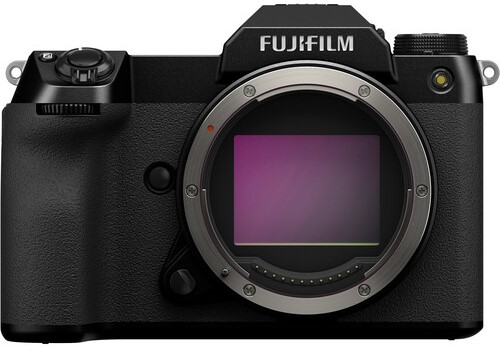Medium format cameras have traditionally been associated with large, heavy, and expensive systems that required a dedicated setup. Enter the Fujifilm GFX 100S, a camera that packs an ultrahigh-resolution 102MP sensor into a surprisingly compact mirrorless body. This combination allows photographers to explore the unique qualities of medium format photography without the logistical burden typically involved.
The Fujifilm GFX 100S excels in delivering both still and video performance. Its 44 x 33mm BSI CMOS sensor, paired with the X-Processor 4, offers 16-bit RAW files, wide dynamic range, and low-noise performance. It also supports UHD and DCI 4K video recording with various internal and external formats, making it an appealing option for hybrid shooters who need high-end stills and video capabilities in a single system.
Beyond technical specifications, the Fujifilm GFX 100S is designed for real-world usability. Its lightweight magnesium alloy body, advanced in-body image stabilization, and intuitive controls make it a practical option for both studio and on-location work. Whether you are printing large canvases on fine art paper or capturing cinematic 4K footage, this camera balances high performance with portability.
Table of Contents
- Design and Build: Compact, Durable, and Weather-Sealed
- Sensor and Image Quality: Fujifilm GFX 100S and 102MP Medium Format Brilliance
- Autofocus and Image Stabilization: Precision with Fujifilm GFX 100S
- Video Capabilities: 4K Performance of the Fujifilm GFX 100S
- Handling and Usability: EVF, LCD, and Controls
- Connectivity and Workflow: Wireless, Remote, and Storage
- Lens Ecosystem and Compatibility: Fujifilm GFX 100S G-Mount Advantages
- Special Features: Pixel Shift, Film Simulations, and More
- Pros and Cons: Is the Fujifilm GFX 100S Right for You?
- Buying a Used Fujifilm GFX 100S: Cost Savings and Smart Options
- The Value of Fujifilm GFX 100S in 2025
- FAQ
Design and Build: Compact, Durable, and Weather-Sealed
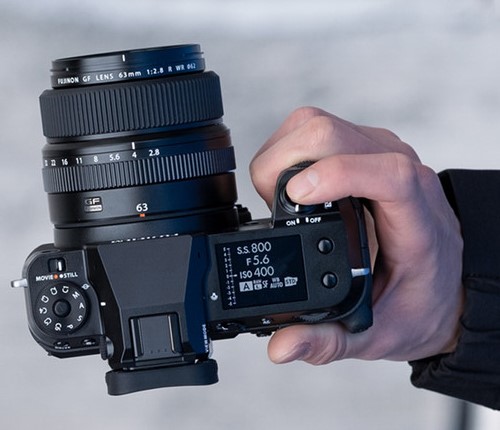
The Fujifilm GFX 100S redefined the medium format experience by offering a compact and lightweight body without compromising durability. Constructed from magnesium alloy, it is both robust and resistant to everyday wear, making it ideal for professional use. The weather-sealed design ensures protection against dust, moisture, and even freezing temperatures down to 14°F, allowing photographers to confidently shoot in challenging environments.
The ergonomics of the Fujifilm GFX 100S have been thoughtfully designed. Its 3.2-inch, 2.36m-dot touchscreen LCD tilts in three directions, enabling comfortable framing from high, low, or side angles. This flexibility is essential when capturing creative perspectives, particularly in outdoor or location-based photography. The fixed 3.69m-dot EVF delivers bright and clear viewing, crucial when composing high-resolution images destined for fine art paper prints.
Additional features enhancing usability include a top sub-LCD monitor for quickly checking exposure and settings, a well-placed exposure dial with six custom positions, and a single NP-W235 battery that provides approximately 460 shots per charge. Dual UHS-II SD card slots allow for versatile storage options, including backup, sequential, or sorting by file type, which is especially valuable when producing large images for gallery-quality fine art paper output.
Sensor and Image Quality: Fujifilm GFX 100S and 102MP Medium Format Brilliance
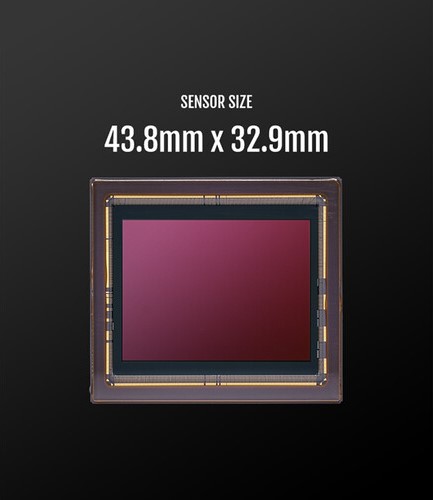
At the heart of the Fujifilm GFX 100S is a 102MP BSI CMOS sensor measuring 43.8 x 32.9mm, paired with the powerful X-Processor 4. This combination delivers 16-bit RAW files with wide dynamic range and minimal noise, even at higher ISO levels. Extended ISO capabilities from 50 to 102,400 ensure flexibility in low-light scenarios, while maintaining color accuracy and tonal richness that medium format photographers expect.
The sensor’s large pixels capture more light per shot, creating smoother transitions and a three-dimensional quality often associated with medium format prints on fine art paper. Photographers can experiment with multiple aspect ratios, including 4:3, 1:1, 65:24, 5:4, 7:6, 3:2, and 16:9, adding creative versatility for both portraits and landscapes. When paired with the Fujifilm GFX 100S’s Pixel Shift Multi-Shot mode, it’s possible to produce images up to 400MP, ideal for exceptionally detailed prints on large fine art paper formats.
The Fujifilm GFX 100S also supports continuous shooting at up to 5 frames per second, enabling photographers to capture fleeting expressions or moments in motion. This, combined with high-resolution output, ensures images remain sharp and detailed whether displayed digitally or printed on premium fine art paper.
Autofocus and Image Stabilization: Precision with Fujifilm GFX 100S
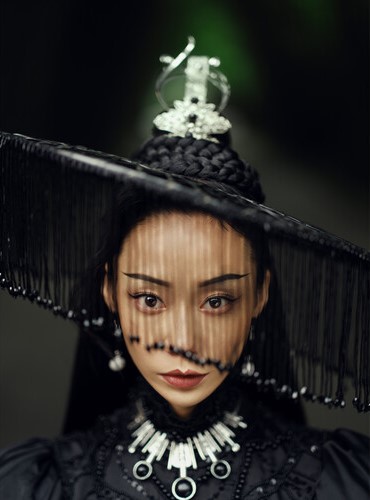
The Fujifilm GFX 100S incorporates a hybrid autofocus system with 425 phase-detection points covering nearly the entire sensor. This enables precise subject tracking and face/eye detection, even in low-light conditions down to -5.5 EV. For portrait and event photographers, this means less time adjusting focus and more time capturing compelling moments.
Paired with the 5-axis sensor-shift image stabilization, photographers can shoot handheld with up to six stops of shake compensation. The stabilization is compatible with all lenses, including non-stabilized models, enhancing versatility. This system is particularly useful when creating large-format prints on fine art paper, where detail and clarity are paramount.
The combination of fast, accurate autofocus and robust image stabilization allows photographers to confidently use the Fujifilm GFX 100S in diverse scenarios, from studio portrait sessions to challenging outdoor landscapes. Personally, I’ve found that handheld medium format shooting becomes much more approachable with this system.
Video Capabilities: 4K Performance of the Fujifilm GFX 100S
Beyond still photography, the Fujifilm GFX 100S offers impressive video capabilities. As noted in the video above by London Camera Exchange, internal recording includes UHD and DCI 4K at 4:2:0 10-bit, while HDMI output supports 4:2:2 10-bit, and external recording provides raw 12-bit video. These options allow filmmakers to achieve professional-quality footage without switching systems.
F-Log gamma and HLG support maximize dynamic range and provide flat profiles for advanced color grading, essential for producing cinematic results. The camera also features a 3.5mm microphone input and headphone output, enabling precise audio capture for interviews or video projects. In my experience, the Fujifilm GFX 100S manages rolling shutter remarkably well, making handheld video shooting more practical than expected for a medium format system.
The camera’s video functionality complements its stills performance, providing photographers who work with both mediums a highly versatile platform. Whether filming on location or creating content for galleries, the Fujifilm GFX 100S allows users to maintain consistent quality across both photos and videos.
Handling and Usability: EVF, LCD, and Controls
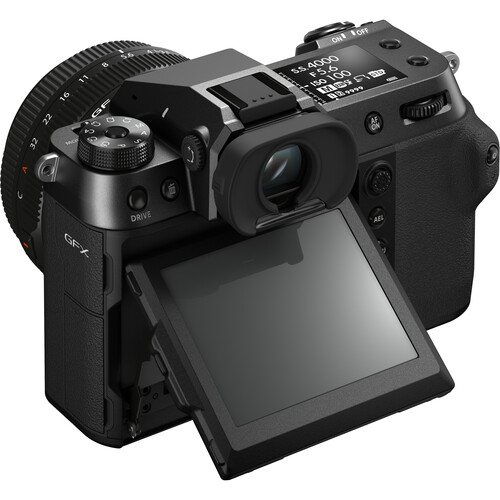
The Fujifilm GFX 100S is designed for intuitive handling. Its 0.77x magnification EVF delivers a high-resolution view for precise composition, while the three-way tilting LCD offers flexibility for creative angles. Top-plate controls, including a custom exposure dial and sub-LCD monitor, allow for rapid adjustment of settings during fast-paced shoots.
Despite its medium format sensor, the Fujifilm GFX 100S remains lightweight at approximately 2 pounds, which makes it far more portable than traditional systems. Personally, I’ve found that the balance between body size and ergonomics makes long sessions less fatiguing, an important consideration when preparing prints on fine art paper that demand maximum sharpness and attention to detail.
Battery life is sufficient for most shoots, and dual memory card slots ensure flexibility and reliability. These design elements make the Fujifilm GFX 100S a practical tool for photographers who need a high-resolution camera without compromising mobility.
Connectivity and Workflow: Wireless, Remote, and Storage
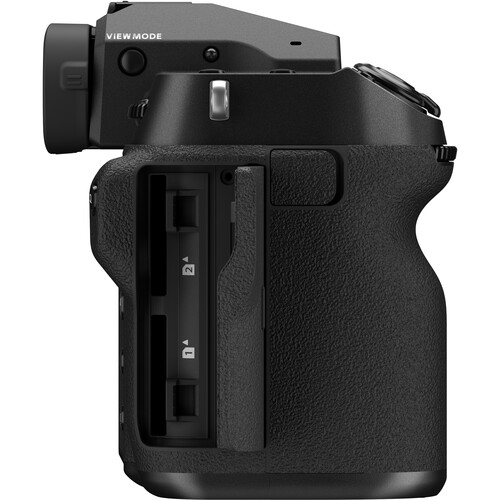
The Fujifilm GFX 100S offers robust connectivity options. Wi-Fi 4 and Bluetooth 4.2 allow for seamless image transfer and remote control through the FUJIFILM XApp on iOS and Android devices. USB-C supports fast data transfer and charging, streamlining the workflow for on-location work.
Dual UHS-II SD card slots provide options for backup, sequential recording, or separating JPEG and RAW files. For photographers producing prints on fine art paper, having reliable storage and immediate backup is essential to protect large, high-resolution files. Personally, this combination of wireless and wired connectivity has made post-processing and client delivery far smoother.
These workflow features, paired with the camera’s high-resolution sensor, ensure that photographers can efficiently handle large datasets while maintaining the quality required for gallery-level fine art paper prints.
Lens Ecosystem and Compatibility: Fujifilm GFX 100S G-Mount Advantages
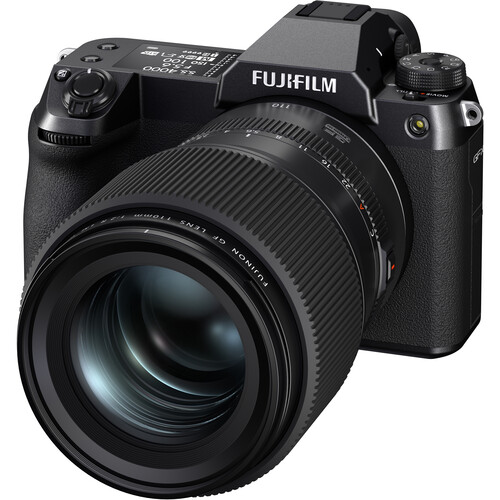
The Fujifilm GFX 100S uses the G-mount system, which provides a short flange distance of 26.7mm, allowing for easy adaptation of additional lenses. This helps reduce vignetting and ensures sharpness across the frame, which is critical when producing fine art paper prints.
The lens lineup includes high-quality primes and zooms designed specifically for medium format, offering exceptional corner-to-corner sharpness and minimal distortion. Whether you’re shooting portraits, landscapes, or still life, the combination of G-mount lenses with the Fujifilm GFX 100S sensor ensures consistent performance suitable for gallery-level prints on fine art paper.
Another advantage is the adaptability to third-party lenses through appropriate adapters. This flexibility allows photographers to use vintage or specialty lenses while still taking advantage of the GFX 100S’s in-body image stabilization and advanced autofocus system. In my experience, this versatility opens creative possibilities that can elevate both digital output and large-format fine art paper prints.
Special Features: Pixel Shift, Film Simulations, and More

The Fujifilm GFX 100S includes a suite of features that extend creative potential. Pixel Shift Multi-Shot mode combines 16 images to produce a 400MP file, perfect for extreme detail on fine art paper. This mode captures textures, patterns, and subtle tonal variations that smaller formats often miss, enhancing prints that demand high fidelity.
Film Simulation modes replicate classic Fujifilm film stocks, including newly introduced Nostalgic Neg., Provia, Velvia, Astia, and Classic Chrome. These simulations allow photographers to achieve a desired mood or color tone without extensive post-processing. When printed on fine art paper, these simulations translate beautifully, maintaining the aesthetic quality envisioned during capture.
Additional features like interval shooting, multiple exposure modes, and in-camera RAW development provide further flexibility. Photographers can experiment creatively while preserving workflow efficiency, ensuring that high-resolution images are ready for fine art paper production without compromise.
Pros and Cons: Is the Fujifilm GFX 100S Right for You?
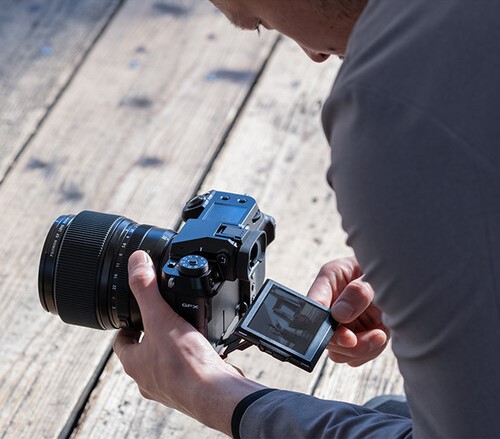
The Fujifilm GFX 100S offers incredible image quality, portability, and a comprehensive feature set. Its strengths include the 102MP sensor, in-body stabilization, robust autofocus, and extensive video capabilities. For photographers aiming to produce large prints on fine art paper, the level of detail and color fidelity is unmatched.
However, the camera does have trade-offs. The price point is significant, and while more compact than traditional medium format cameras, it is still larger than full-frame mirrorless systems. Additionally, the learning curve for medium format photography can be steep, particularly when maximizing the potential of features like Pixel Shift Multi-Shot and advanced film simulations.
Despite these considerations, for those who prioritize ultimate image quality and versatility in both stills and video, the Fujifilm GFX 100S is a compelling choice. Personally, I find that its combination of portability, precision, and creative control justifies the investment for professional and enthusiast photographers alike.
Buying a Used Fujifilm GFX 100S: Cost Savings and Smart Options
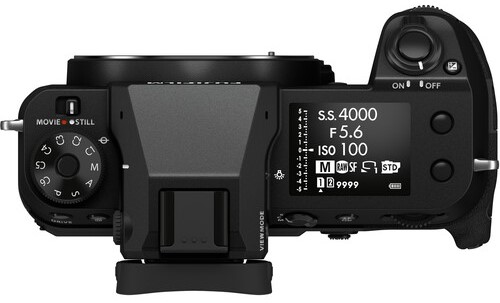
For many photographers, the high price of a new Fujifilm GFX 100S can be a significant investment. One practical solution is buying a used model, which allows you to access the same medium format performance at a fraction of the cost. Platforms like MPB specialize in used camera gear and are an excellent choice for purchasing a pre-owned GFX 100S.
MPB thoroughly inspects and grades each item before listing, providing transparency about the camera’s condition. Most listings also include a six-month warranty, which adds peace of mind similar to buying new, and a seven-day return window, giving you time to ensure the camera meets your expectations. The combination of careful inspection, warranty, and returns makes buying used a smart and reliable option.

Inventory on MPB is constantly changing, so if the GFX 100S you want isn’t available today, checking back frequently can help you snag a great deal. Additionally, MPB’s customer service is highly rated, offering guidance and support if you have questions about condition, compatibility, or shipping. Personally, I’ve found that buying used from such a platform allows photographers to access top-tier equipment without compromising quality or security.
Ultimately, purchasing a used Fujifilm GFX 100S is a savvy way to reduce the upfront cost while still benefiting from the full capabilities of this high-resolution medium format camera. It’s particularly valuable for photographers looking to invest in fine art paper printing or hybrid work without overextending their budget.
The Value of Fujifilm GFX 100S in 2025
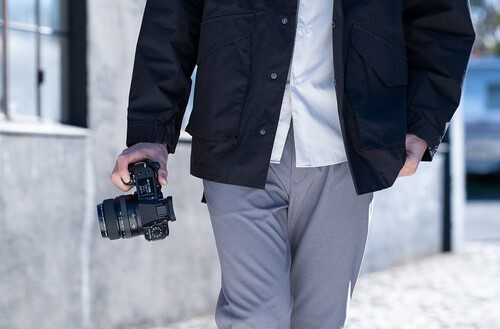
In 2025, the Fujifilm GFX 100S remains relevant due to its high-resolution capabilities, robust build, and hybrid performance. The ability to produce 102MP images suitable for large-scale fine art paper prints ensures that this camera will continue to meet professional standards for years to come. Investing in this camera is not only about immediate output but also long-term versatility.
Considering the costs associated with medium format lenses, accessories, and storage solutions for high-resolution files, the Fujifilm GFX 100S offers a balance between performance and portability. Its feature set is comprehensive enough to handle both studio and on-location work, making it a cost-effective option in the long run, especially for photographers focused on producing gallery-quality fine art paper prints.
Ultimately, the camera’s value is amplified by its versatility. Beyond fine art applications, it excels in commercial, landscape, and hybrid photography. Photographers can expect the Fujifilm GFX 100S to remain a capable and rewarding investment for several years, maintaining both performance and resale value.
FAQ
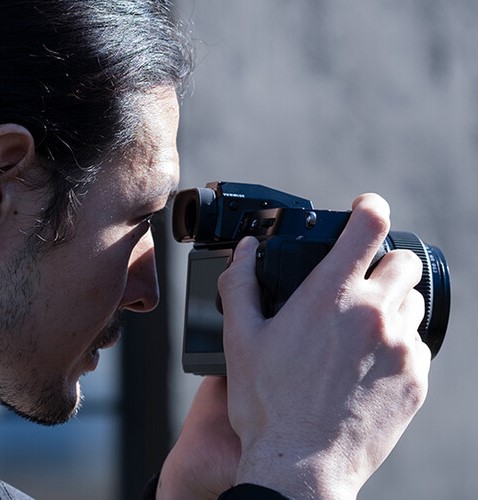
What is the Fujifilm GFX 100S sensor size and resolution?
The Fujifilm GFX 100S features a 43.8 x 32.9mm medium format BSI CMOS sensor with a resolution of 102 megapixels, providing exceptional detail for stills and video.
Does the Fujifilm GFX 100S support in-body image stabilization?
Yes, it has a 5-axis sensor-shift stabilization system that compensates for up to six stops of camera shake, making handheld shooting more practical for both stills and Pixel Shift Multi-Shot mode.
Can the Fujifilm GFX 100S shoot 4K video?
Absolutely. The camera supports UHD and DCI 4K at 10-bit internally, 4:2:2 via HDMI, and raw 12-bit externally, along with F-Log and HLG for advanced post-production workflows.
Is the Fujifilm GFX 100S suitable for printing on fine art paper?
Yes, the 102MP resolution and Pixel Shift Multi-Shot mode make it ideal for large-format prints on fine art paper, delivering exceptional detail, tonal range, and color fidelity.
How portable is the Fujifilm GFX 100S compared to other medium format cameras?
Weighing around 2 pounds with battery, it is significantly more compact than traditional medium format cameras, making it practical for studio and on-location shoots.
Which lenses are compatible with the Fujifilm GFX 100S?
The camera uses the G-mount system, which includes a range of high-quality Fujifilm G lenses. It also supports third-party lenses via adapters, maintaining autofocus and stabilization performance.
Does the Fujifilm GFX 100S have weather sealing?
Yes, the magnesium alloy body is weather-sealed, dust- and moisture-resistant, and freezeproof down to 14°F, allowing confident use in challenging conditions.
What is the battery life of the Fujifilm GFX 100S?
The camera uses a single NP-W235 battery that provides approximately 460 shots per charge, sufficient for most professional and enthusiast workflows.
Final Thoughts on the Fujifilm GFX 100S
The Fujifilm GFX 100S remains a remarkable camera in 2025, blending medium format image quality with a compact, usable form factor. Its high-resolution sensor, advanced autofocus, in-body stabilization, and hybrid capabilities make it suitable for photographers focused on fine art paper prints, commercial work, or hybrid still and video projects. While the investment is significant, the camera’s versatility, durability, and creative potential justify the cost, ensuring it will remain a valuable tool for years to come.

